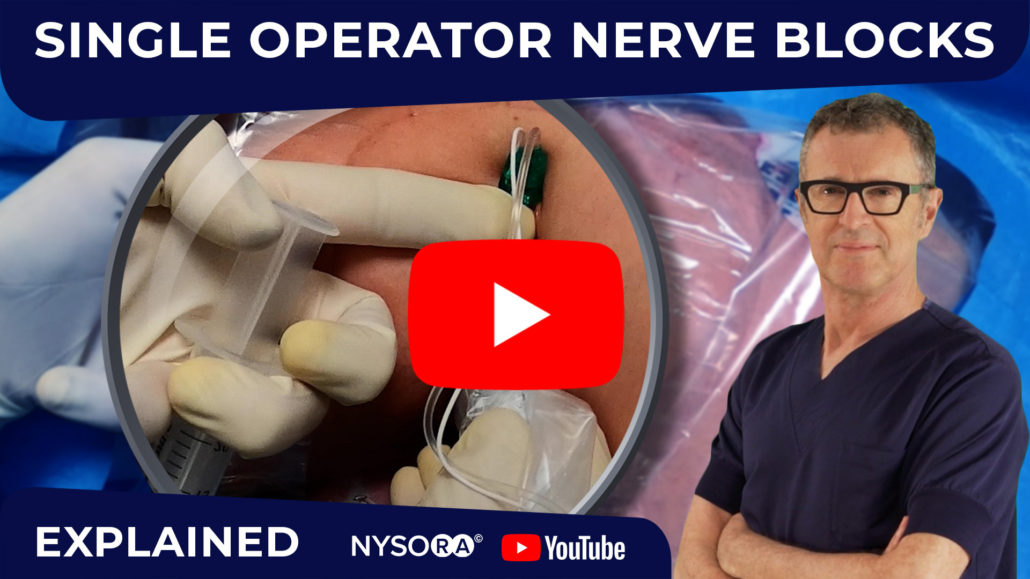
Single Operator Nerve Blocks
Practicing ultrasound-guided peripheral nerve blocks usually requires a second person to help with the administration of the local anesthetic, and to lend overall assistance with block performance. However, it is possible to administer peripheral nerve blocks without the assistance of a second person, and here we describe three different ways you can do that.
Below is the ultrasound image of the axillary brachial plexus, with the needle approaching the location at around 10 o’clock, just above the axillary artery.
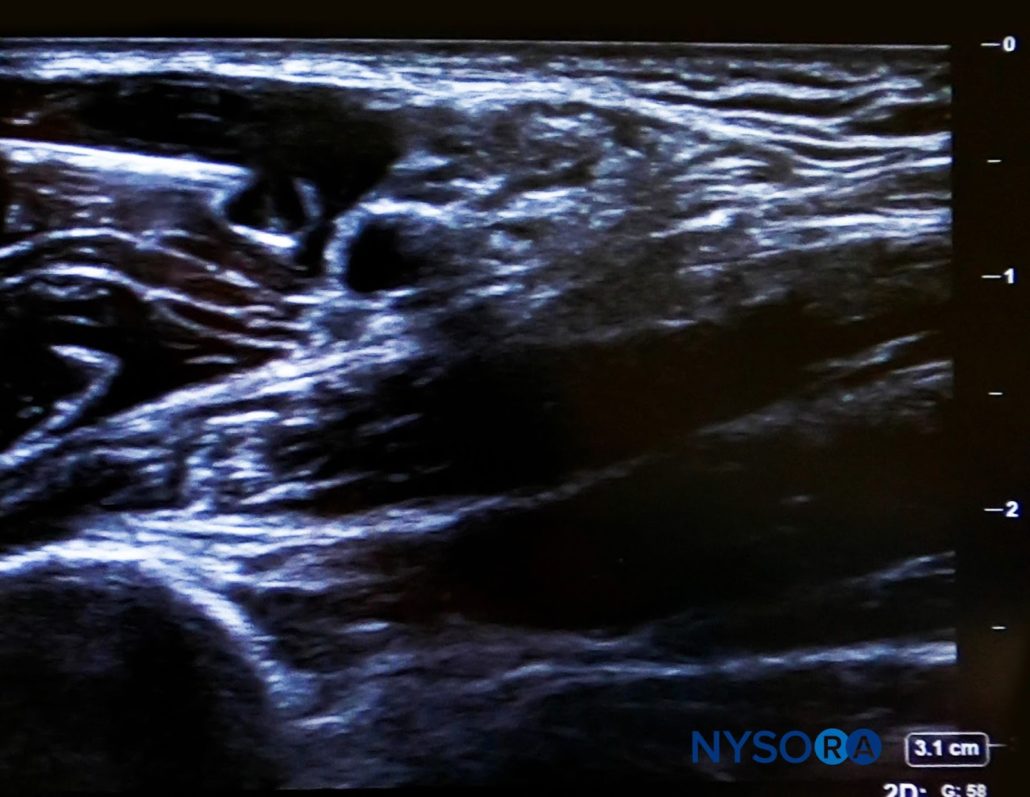
Ultrasound image of the axillary brachial plexus with the needle approaching the location for injection, just above the axillary artery.
When the needle is placed in position for injection, the operator can hold the transducer with one hand and the syringe with local anesthetic in the other. The operator can then turn his attention to monitoring the injection and the disposition of the local anesthetic. That way, if there is any deviation from what he is expecting, the operator can recorrect the needle position to achieve the desired local anesthetic distribution. Sometimes this method is not so effective, as the needle may move during the injection of the local anesthetic. However, as long as you monitor the needle position on the ultrasound continuously and keep a close watch on the distribution of the local anesthetic, you can adjust accordingly. Therefore, with this method, one hand is on the transducer, and the other is on the syringe.
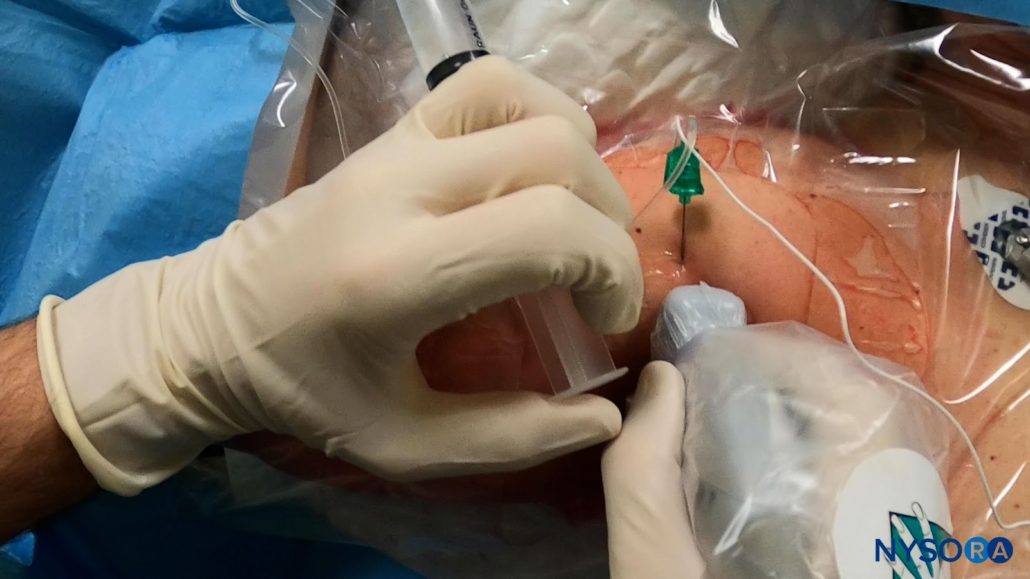
Method 1: The needle is left in place unsupported while the operator monitors the injection spread on ultrasound.
A second technique involves supporting the needle with a finger to prevent it moving from the intended position. This method requires a certain degree of skill but, once you master it, it is really effective. Note that the hand-to-eye coordination is extremely important here: as you can see in the video, one finger has to support the needle while the hand is injecting or aspirating during the procedure and the local anesthetic injection.
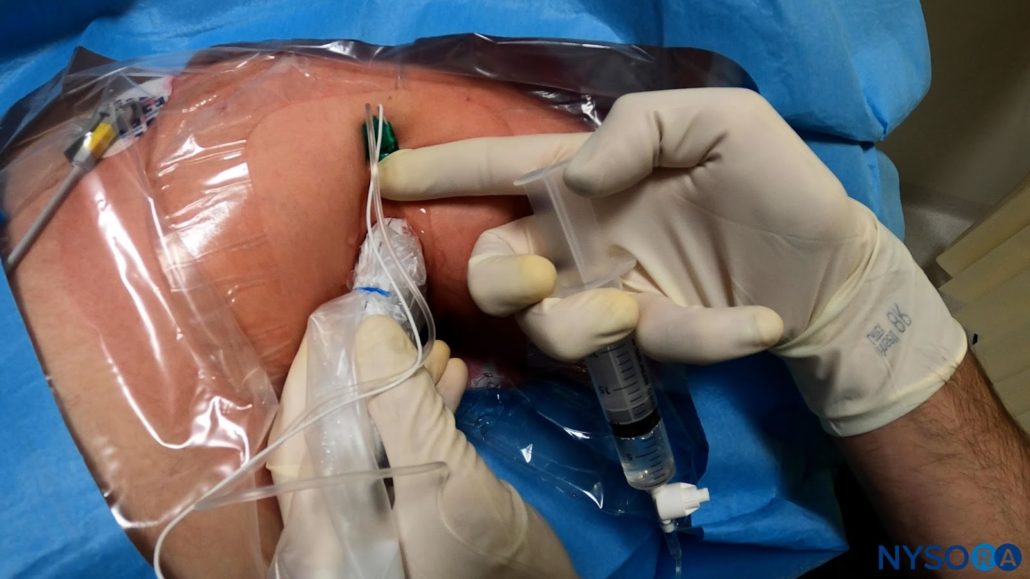
Method 2: The needle is supported with a finger to prevent it from moving.
The third option demonstrated in the video is a more modern method, where we use an injection pump operated by a foot or hand controller.
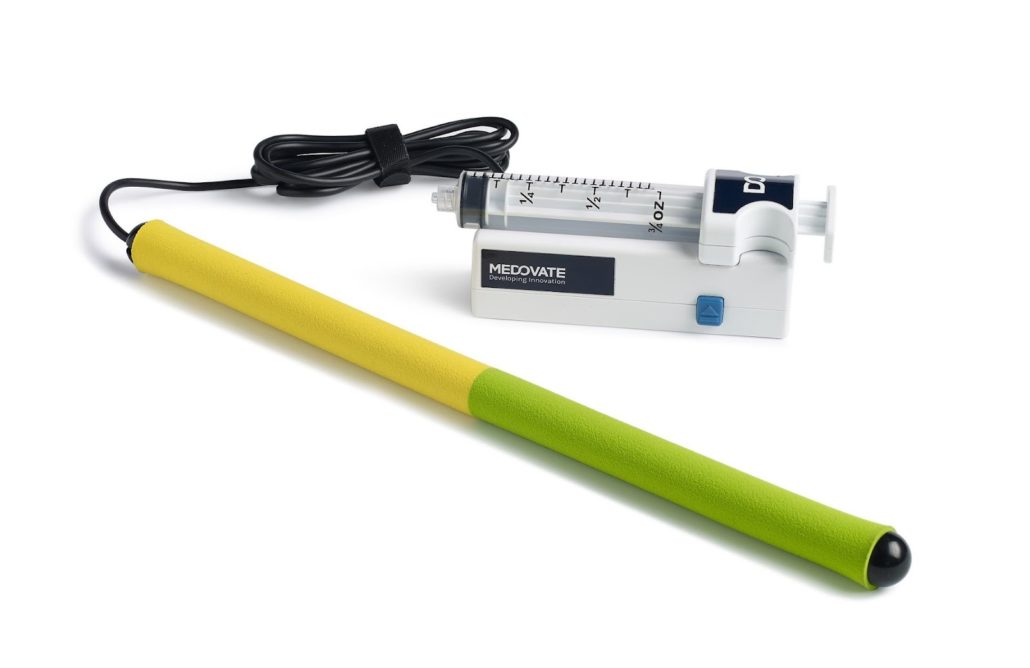
Method 3: Injection pump device with foot or hand controller.
In this setup, the injection pump is placed on the patient, bed, or injection tray, while the injection pump is operated using a foot control.
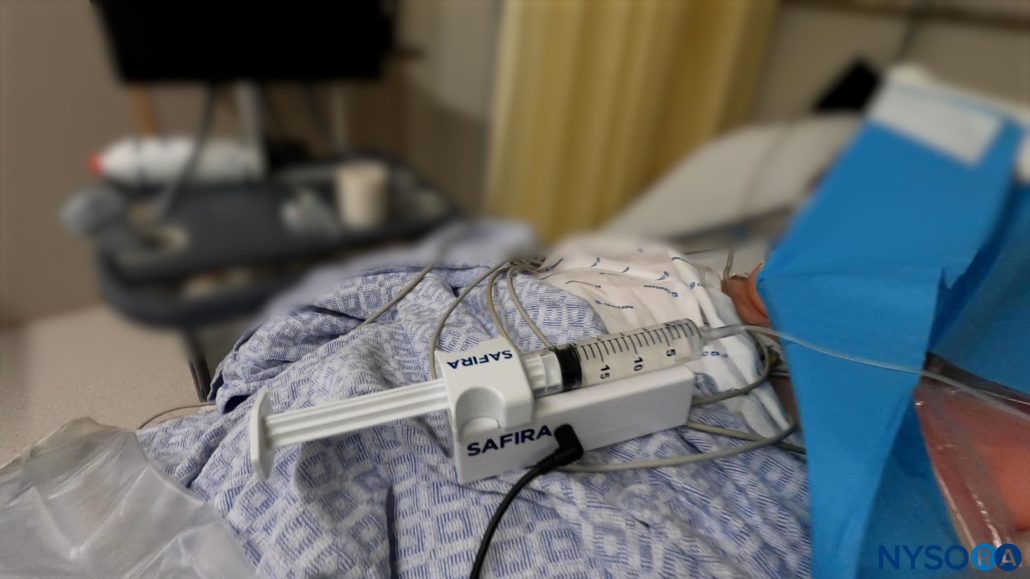
The injection pump is placed on the patient’s bed.
Half of the foot control is for aspiration, while the other half is for administration or injection of the local anesthetic. The pump itself also has a built-in pressure monitor. That way the injection pressure is monitored by the pump device throughout the procedure. This decreases the risk of local anesthetic injection at pressures that may be involved with needle placement intraneurally, intrafascicularly, or into the tendon. The operator presses on a pedal once the needle is placed appropriately, and the injection pump will aspirate, or inject local anesthetic depending on which side of the bar or controller of the device you step on.
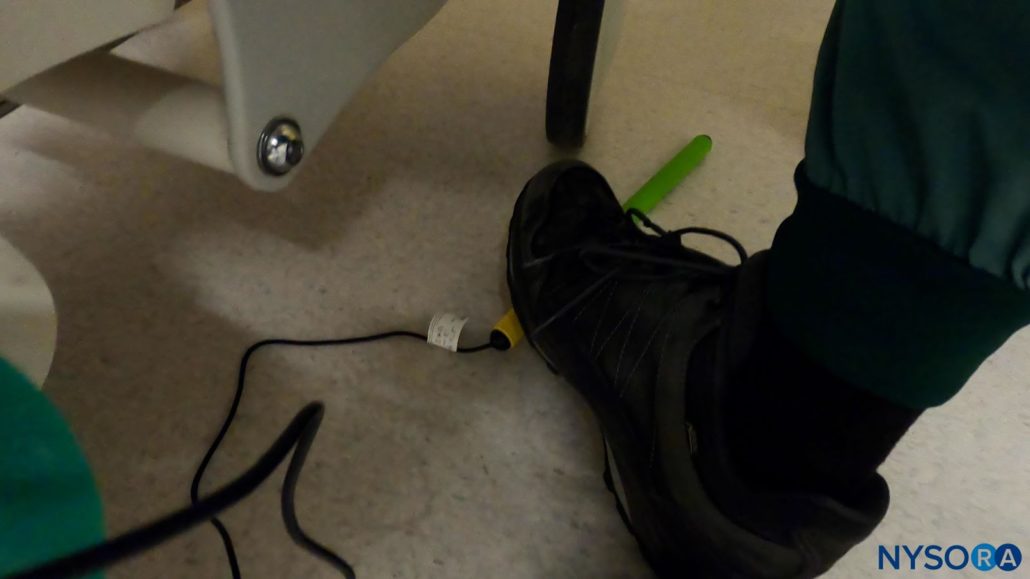
The injection pump is controlled by the foot. Depending on which side of the bar or controller you step on, the device will aspirate or inject the local anesthetic.
The light on the injection pump will indicate which process is ongoing, which makes for seamless and convenient monitoring.
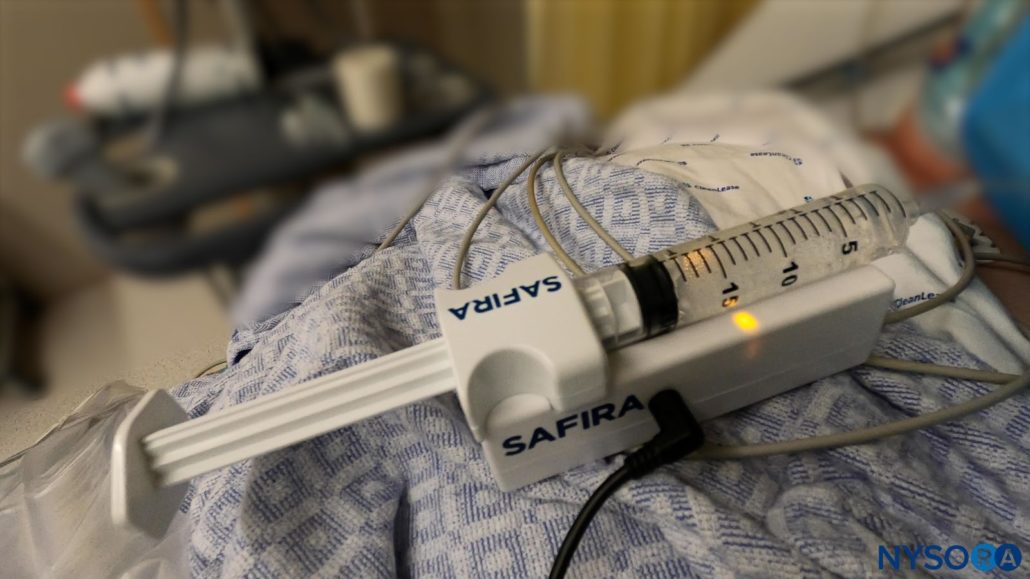
The light on the injection pump indicates whether the device is aspirating or injecting the local anesthetic.
So, there you have three different methods you can use to administer the local anesthetic single-handedly.
Do let us know how you address this issue in your own practice. Do you have nurses to assist in the process for all blocks? Or have you developed some particular approach or alternative method that allows you to administer the local anesthetic without any helper person on hand?
We’d love to hear your views and suggestions.



